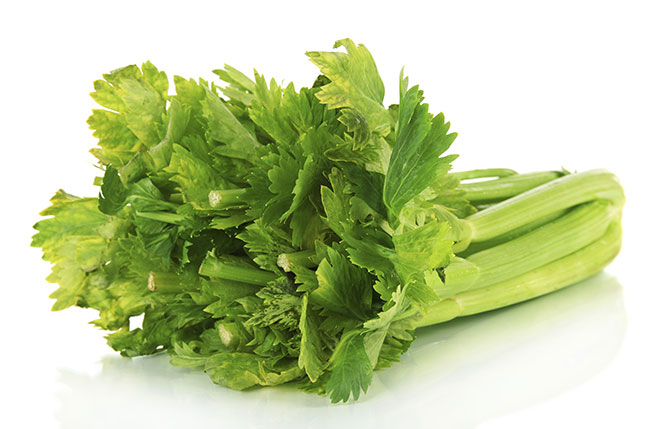
Celery belongs to the same plant family as carrots and parsley. The leaves and aroma of wild celery originally resembled parsley and the word celery derives ultimately from the Greek word for parsley, selinon. Celery was used since ancient times, although only relatively recently as food. Leaves of the celery plant have been found in the tombs of pharaohs, they are mentioned in Homer’s Iliad and Odyssey, and they we worn as garlands by the winners of the Nemean Games. Many European people adopted celery early on, especially in places near the Mediterranean. Celery was not adopted by the English until the latter half of the 17th century. This is likely due to the fact that it takes a great deal of seed selection and careful cultivation to grow celery that is palatable. Wild celery is pungent and generally considered unpleasant. Millennia of selective breeding have created celery with milder flavor and more pleasant texture. Today, celery is used widely. The ribs of celery are not the only parts that are utilized; celery leaves are typically used as an herb to flavor stews and soups. The roots and dried leaves are ground to create celery salt which is used as a spice. Celery is recognized as a very healthful food. It is sometimes wrongly asserted that celery is a negative calorie food, meaning that the body uses more energy to digest it than it gets from it. That is a popular myth, but celery is notably healthy nonetheless, because it provides a high amount of dietary fiber and lots of nutrients in a low calorie package.
Often celery is eaten raw with dips and spreads, or chopped in a tossed salad. Add chopped celery to any green salad to add a bit of crunch and flavor. Smear lengths of celery stalk with things like peanut butter or cream cheese and serve as a finger food. The texture of raw celery can be improved by removing some of the larger stringy fibers from the tougher stalks. Celery is a member of the “holy trinity” of Louisiana creole and Cajun cooking, alongside onion and bell pepper. Chopped celery, onions and carrots combine to make mirepoix, a traditional French vegetable mix used as a base for a variety of dishes, especially soups. Soups are a fantastic way to use celery, as boiling celery softens its fibers and releases its subtle peppery flavor. Slice celery on the bias in finger length pieces and add to any stir-fry to add a crunchy texture.
Pick celery that is firm and slightly moist to the touch. Fresh celery should not bend much. Uniform light green color indicates healthy, fresh celery. The leaves of celery can indicate freshness as well; vibrant, healthy leaves are a great sign that celery is fresh. One of the first signs of celery going bad is wilting leaves. Keep celery stalks loosely wrapped in plastic in the refrigerator where they will keep fresh for up to two weeks. If celery goes limp, soak it in ice water for a few minutes to revive it. Always thoroughly clean fresh produce prior to use.


 BACK TO PRODUCTS
BACK TO PRODUCTS